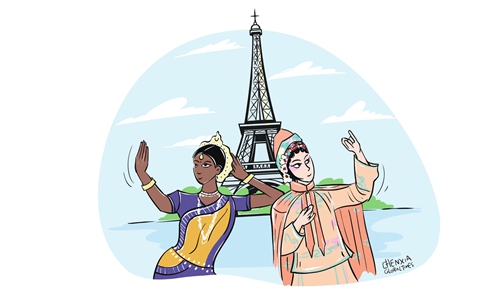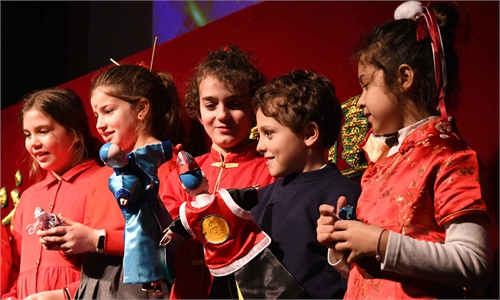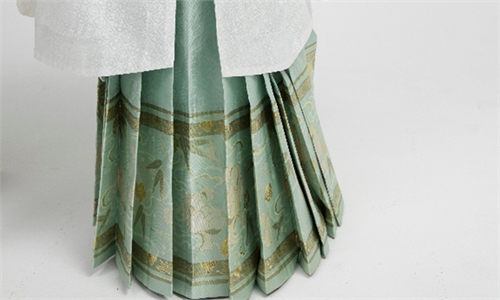ARTS / CULTURE & LEISURE
Traditional inheritors, fashion designers bridge ancient aesthetics, trends
Reviving timeless crafts
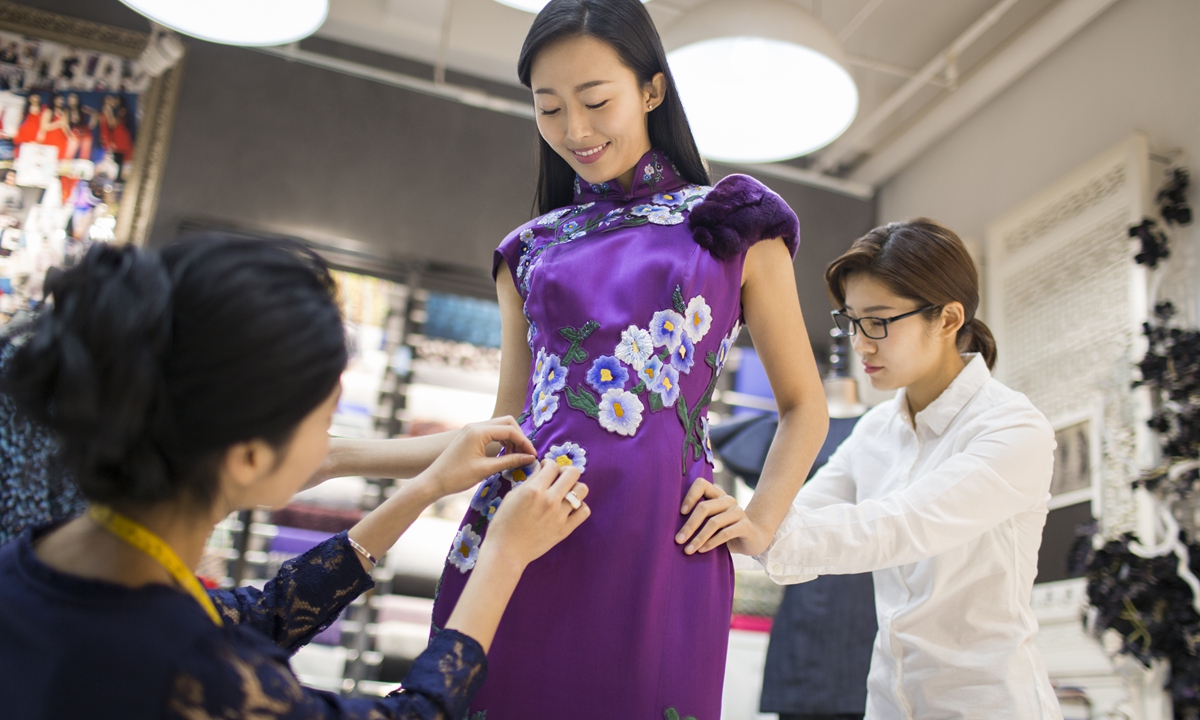
Fashion designers tailor a cheongsam to fit a customer. Photo: VCG
Editor's Note:
How can art and culture from the past survive in a globalized world? Inheriting the treasure of art and culture from the past thousands of years, young Chinese have created a new trend - Guochao, or China chic. It refers to a movement started by an increasing number of young people who are endeavoring to revive and reinvent China's traditional culture.
We can see fashion designers drawing inspirations from the precious murals inside the Yungang Grottoes, and traditional instrument players creating all new trendy music on pipa. These young Guochao trendsetters have helped China's cultural legacies be passed down and preserved for future generations.
In this series, we will interview young people who are using wisdom and creativity to reinterpret traditional Chinese culture in their particular field of expertise. This time, Global Times reporters Sun Langchen and Li Hang focused on two young women's efforts to revive the timeless crafts. From vibrant Chaozhou crochet revival to the timeless elegance of qipao, a close-fitting woman's dress with high neck and slit skirt, traditional crafts are finding new life and global appreciation.
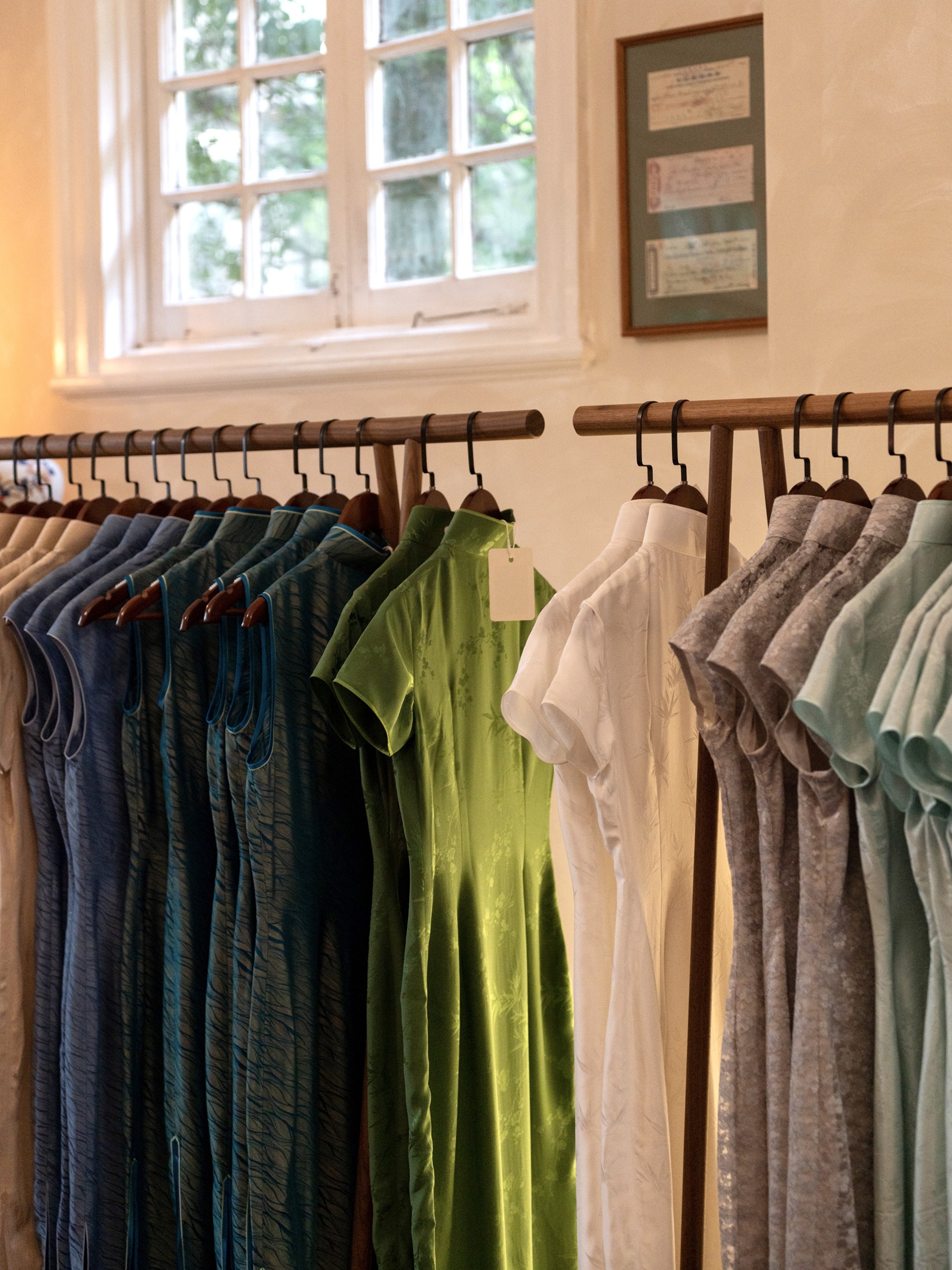
Cheongsam dresses at Heather Guo's store Photo: Courtesy of Guo
Combining tradition with modern design
As crochet hooks rhythmically traverse yarn, vibrant and lifelike patterns emerge, showcasing the traditional Chaozhou crochet technique. This unique art form, known for its intricate lacework, has been a staple in Chaozhou, South China's Guangdong Province, for generations.
Chaozhou crochet is a traditional craft from the Chaoshan region. Using just a single crochet hook and three basic techniques, intricate patterns can be woven. Known for its flexibility and convenience, with no limitations on where it can be practiced, crocheting became a popular way for many women in Chaozhou to supplement their household income during the 1980s and 1990s. In 2014, Chaozhou embroidery was included as part of the fourth batch of National Intangible Cultural Heritage listings.
Huang Jiayu is a native of Chaozhou born in 1990. She grew up surrounded by women skilled in crochet. According to Huang, during the off-season for farming, local villagers would fulfill orders, with much of their handcrafted lace exported overseas, supplementing their income.
Huang's father opened a crochet factory, and her childhood was filled with memories of aunts working on orders at home.
"Some items with bright red and green colors were destined for Africa; the vividly colored bikinis mostly went to Europe and America; orders from Japan tended to be more nature-inspired, with lower color saturation," Huang said.
However, upon graduating from university in 2014, Huang discovered that the family business was on the brink of bankruptcy, as machinery had begun to overshadow traditional craftsmanship.
"It would have been a real pity if my parents had to close their crochet factory. The ladies working there would have lost their jobs, and their families also rely on that income," Huang recalled.
Determined to preserve this traditional art form, she began to sell her crochet designs while traveling in Southwest China's Yunnan Province. To her surprise, her creations quickly gained the favor of young people.
Returning to Chaozhou a year later, Huang rallied the local crochet aunties to form the "Crochet Team," combining their skills to innovate and rejuvenate the craft. The average age of the team members is about 50 years old.
"The aunties are very familiar with these traditional crafts, but they haven't independently designed any products. They tend to have more traditional ways of thinking, so it takes longer to refine products to fit the current market. Our ways of thinking are different," Huang said.
Take a smiley face, for instance: They think a mouth that curves downward or outward is basically the same. But in reality, the specific expression of an emoji can give people very different impressions, she noted.
Huang's vision is to break away from conventional designs and introduce vibrant, three-dimensional elements to her creations.
"Traditional crochet designs often seemed outdated in contemporary fashion," Huang said. "Combining diverse, modern designs with traditional techniques is crucial to stay relevant today."
Huang draws much of the inspiration for her work from life. When she encounters something she likes or a captivating color combination, she consciously incorporates it into her crochet designs.
Bikinis, earrings, backpacks... Huang is well-versed in crochet products. With spring approaching, she has designed the "Spring Bloom" series, featuring earrings inspired by canola flowers, angelica flowers, and goji berries to add a touch of spring vitality for youthful girls.
After watching a documentary about the ocean, she was inspired to create the "Coral Reef" series, using colors derived from underwater fish and seawater to bring a refreshing coolness. The "International Women's Day" series, characterized by square shapes and orange tones, encourages everyone to break free from conventions and be true to themselves. These refreshing crochet products, sold online across the country, are particularly popular among young customers.
While they were initially skeptical about whether Yang's designs would catch on or generate sales, the thriving online store business proves that their choice was the right one.
Huang also includes a signed card from the maker with each product, creating a personal connection between customers and creators.
She frequently shares customer's reviews and comments with the aunties, allowing them to enjoy the feedback and share in the customers' appreciation and joy.
In June, an exhibition featuring works by Huang and her team was held in Shanghai. Among the items was a vividly colored, fully hand-crocheted dragon that drew gasps of awe from many visitors.
"I love witnessing the connections between people through art that combines traditional symbols with fresh, modern forms. The first expression of amazement when people see the works is always the same," she told the Global Times.
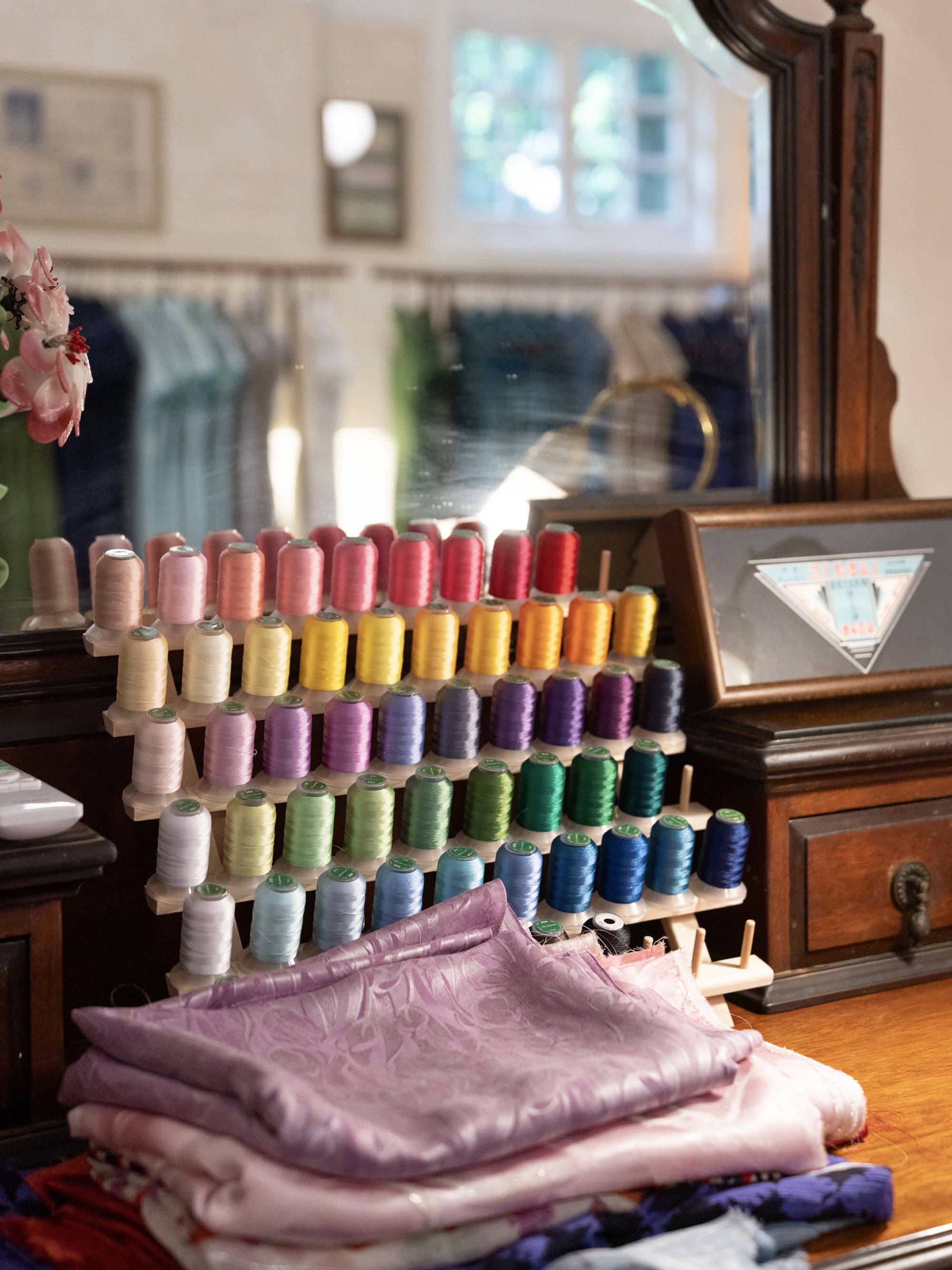
Different colored threads and silk at Heather Guo's store Photo: Courtesy of Guo
Revising cultural appropriationHeather Guo, a 23-year-old entrepreneur, is making a significant impact on the appreciation of traditional Chinese fashion through her boutique, the Xiangjiang Silk Company, located in Manhattan's West Village in New York City. Named after Hong Kong's alternate name, Xiangjiang, the store is dedicated to preserving and celebrating qipao, a traditional dress that takes inspiration from the ethnic clothing of the Manchu people.
Guo's journey into the world of qipao began serendipitously when she encountered a collection of vintage qipao in a New York gift shop. These garments, relics of Hong Kong's golden era of fashion, were woven from silk and adorned with intricate patterns.
"They were densely woven, often featuring intricate patterns," Guo told the Global Times.
As more and more people grew interested in qipao, she gained a passion for preserving and celebrating it.
The history of qipao is a tapestry of cultural evolution and craftsmanship. It traces its origins back to the traditional attire of the Manchu ethnic group, who ruled China during the Qing Dynasty (1644-1911). Qipao was originally designed for men. In the 1920s, as feminist consciousness rose, Chinese women embraced qipao, transforming it into a form-fitting, figure-flattering dress.
However, it may be surprising that over time, this trend became Westernized and continuously intersected with Western fashion trends.
"It is distinctly Chinese, yet it has not developed in isolation, as it has always drawn from foreign clothing trends. China and other countries have always maintained cultural exchanges," Guo noted.
It is also worth noting that despite this historical background, qipao's role as a symbol of Chinese cultural heritage has often been misunderstood or appropriated in popular Western culture. Even now, some may acknowledge that it has been commercialized as part of the "Eastern dream," a trend that sometimes overlooks its cultural roots and significance.
Some may even think that qipao has the same origin as the kimono, a traditional item of clothing from Japan.
Many foreign interpretations of the qipao reduce it to mere exoticism, failing to recognize the depth of its historical and cultural context.
"You can only embrace a culture when you really understand it," Guo said, noting this kind of foreign interpretation is "cultural appropriation."
Guo's dedication to preserving the authenticity of the qipao is evident in her approach to both vintage and contemporary designs. At Xiangjiang, she refuses to alter vintage dresses, honoring them as perfect representations of past wisdom and style.
"Each vintage qipao in our store is unique, reflecting the personal choices of its original owner," she emphasized.
Her commitment also extends to creating new qipao designs that respect traditional techniques while integrating modern fashion concepts for greater comfort and inclusivity.
Guo's improvements include replacing the wide and very visible iron zippers with modern invisible zippers. Some complex and difficult-to-wear styles, like the shoulder-opening qipao, were hard to fasten and wear, and people were unwilling to wear such inconvenient clothing, so there was no need to keep these complicated designs.
However, "The New Chinese style must originate from the Old Chinese style, without the Old Chinese style, the New Chinese style is like water without a source," she noted.
The fabrics Guo chooses to use still adhere to the framework of the 1950s and 1960s, avoiding overly modern materials. The workshop, staffed by four tailors, produces around 150 dresses per month using high-quality silk from Hangzhou.
By introducing vintage qipao while designing new qipao, Guo highlights the importance of understanding and respecting the cultural background of traditional garments through education.
A lack of understanding often leads to the superficial use of traditional elements without genuine appreciation, which she has encountered in her sales experience.
Once a seller from New York received vintage qipao dresses from a Chinese lady who had given them to the seller's granddaughter. The way she sold them caused a heated dispute to erupt between her and her granddaughter.
"The granddaughter told me the seller just labeled it a 'simple Chinese dress' and sold it without her permission," Guo said. "It's of course not just a simple Chinese dress, even her granddaughter knew that."
One significant acquisition for Guo's store was a collection of qipao dresses from a diplomat's wardrobe.
These garments, initially sold off without regard for their cultural value, highlighted the need for deeper respect and understanding.
At Xiangjiang, Guo also creates an immersive experience that connects visitors with the rich history and craftsmanship of these garments. Her boutique features vintage items and decor that evoke a sense of nostalgia and cultural appreciation, making each visit a journey through time and tradition.
Now Guo has opened a store in Shanghai, her hometown, for qipao fans in China who'd also like to gather one of these precious pieces of culture. Looking ahead, Guo intends to open a new store in London, the UK and increase cultural outreach to others about the true essence of qipao.
"I want to continue to share the beauty and significance of qipao as a symbol of Chinese culture and heritage," she said.
